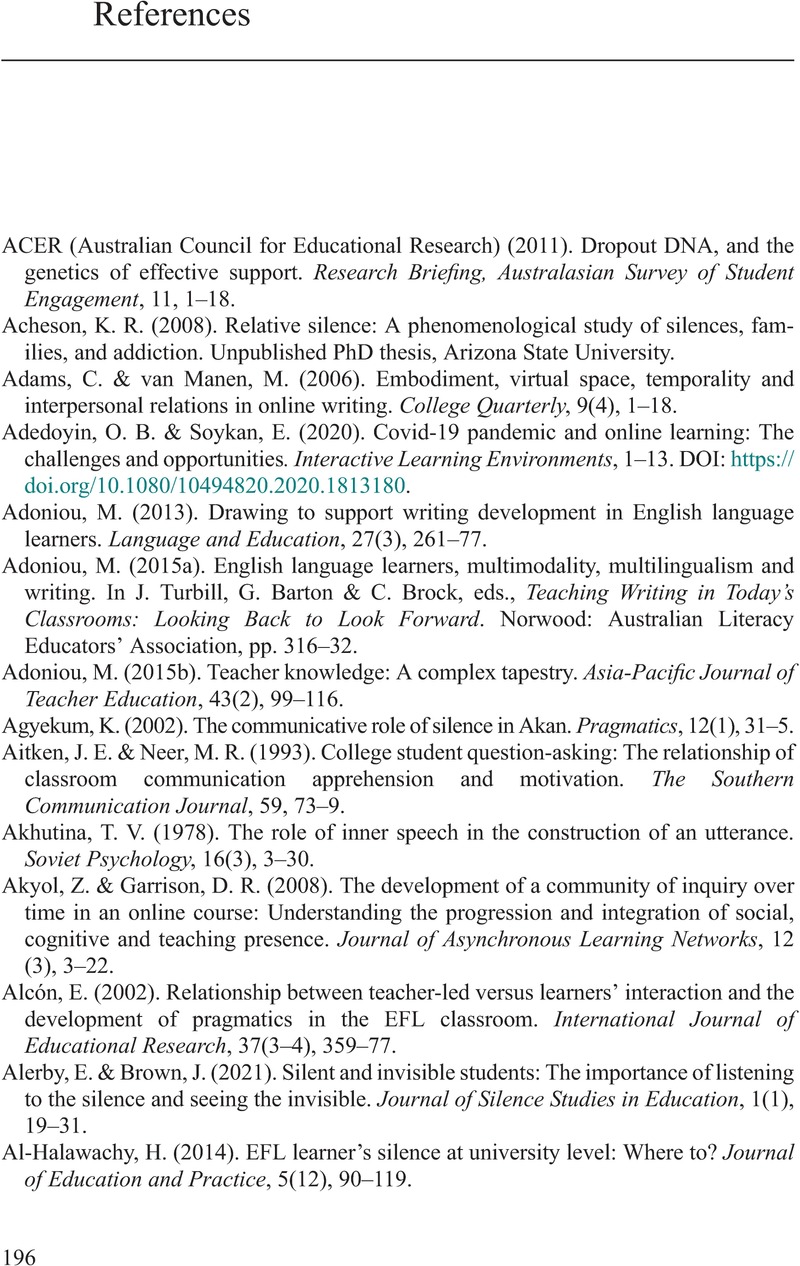Book contents
- Silence in English Language Pedagogy
- Silence in English Language Pedagogy
- Copyright page
- Contents
- Figures
- Tables
- 1 Embracing Silence in Education
- 2 The Presence of Silence in Second Language Acquisition
- 3 Trends in Silence Research
- 4 Elements That Shape Pedagogy for Silence
- 5 Problematising Silence
- 6 Ways of Addressing Classroom Silence
- 7 Online Silence
- 8 Coping with Undesirable Online Silence
- 9 Silence in ELT Task Design
- 10 Some Ideas for Silence Research
- References
- Index
- References
References
Published online by Cambridge University Press: 02 February 2023
- Silence in English Language Pedagogy
- Silence in English Language Pedagogy
- Copyright page
- Contents
- Figures
- Tables
- 1 Embracing Silence in Education
- 2 The Presence of Silence in Second Language Acquisition
- 3 Trends in Silence Research
- 4 Elements That Shape Pedagogy for Silence
- 5 Problematising Silence
- 6 Ways of Addressing Classroom Silence
- 7 Online Silence
- 8 Coping with Undesirable Online Silence
- 9 Silence in ELT Task Design
- 10 Some Ideas for Silence Research
- References
- Index
- References
Summary

- Type
- Chapter
- Information
- Silence in English Language PedagogyFrom Research to Practice, pp. 196 - 241Publisher: Cambridge University PressPrint publication year: 2023

